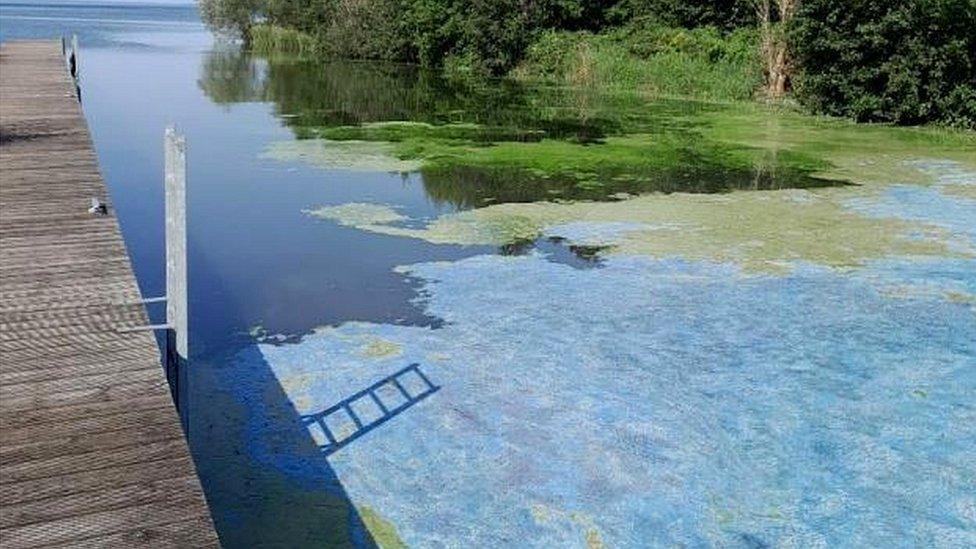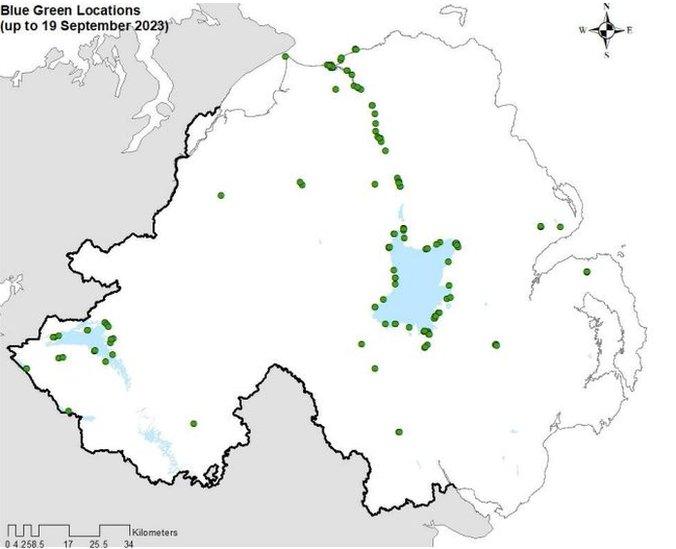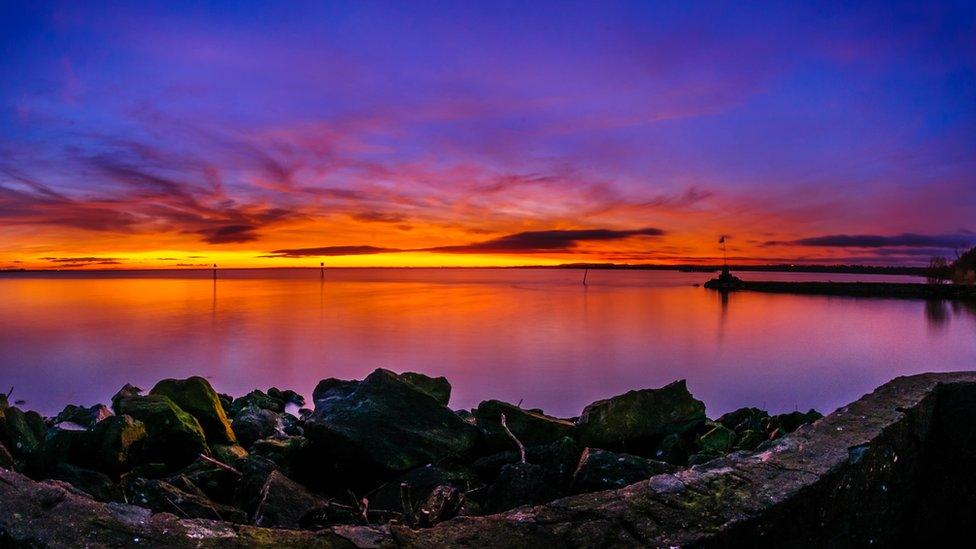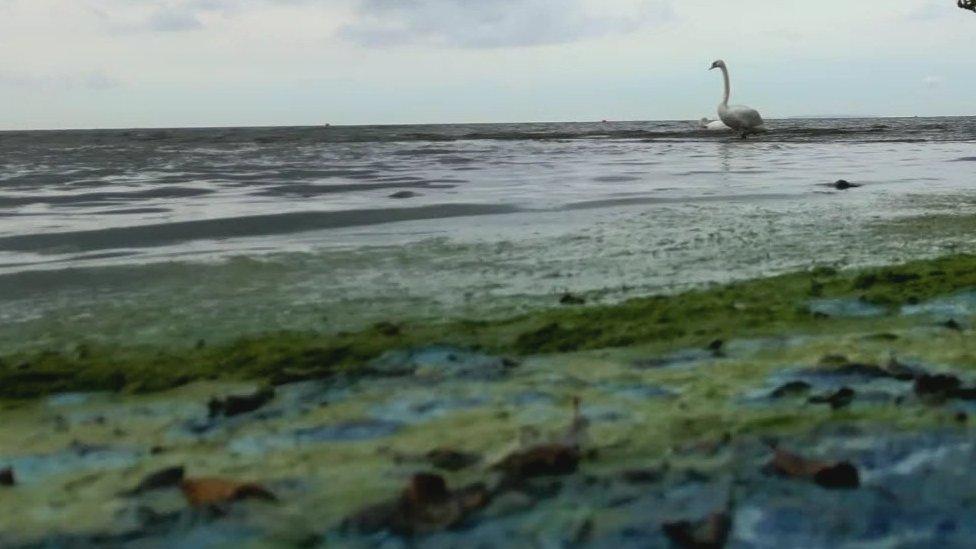Blue-green algae map shows extent of Lough Neagh problems
- Published

The blue-green algae on Lough Neagh
New images and maps have been published which show the extent of environmental problems facing Lough Neagh.
The Department of Agriculture, Environment and Rural Affairs (Daera) released the information to try to help explain the deterioration in the lough.
Toxic blue-green algae has been found in waterways at more than 60 locations across Northern Ireland since May.
A map pinpointing the locations has been published which shows the algae has been on all sides of Lough Neagh.
It has also been on a long stretch of the River Bann, ending on the north coast between Portstewart and Castlerock.
Isolated outbreaks have been found in other areas including waters in east Antrim and north Down, plus a concentration in Lower Lough Erne in County Fermanagh.

A map shows the different parts of Northern Ireland where the algae has been found
An image has been provided by the European Space Agency of Lough Neagh to help scientists and environmentalists trying to resolve the problems.
Blue-green algae can be harmful to humans and highly toxic to animals.
Daera has confirmed that in June the water temperature at Lough Neagh reached a record 17.4C.
A spokesperson said: "The underpinning drivers of the increase in blue-green algae blooms include the excess nutrients from agricultural and waste water systems within the Lough Neagh catchment, combined with climate change and the associated weather patterns, with the very warm June, followed by the wet July and August."
Lough Neagh is the largest freshwater lake in the UK and supplies half of Belfast's drinking water and 40% of Northern Ireland's overall. In spite of recent events, the authorities insist the drinking water is still safe.

The algae is technically a type of bacteria called cyanobacteria
Although it is known as blue-green algae, it is technically a type of bacteria called cyanobacteria. It naturally inhabits freshwater, coastal and marine waters and, like plants, requires sunlight, nutrients and carbon dioxide to grow and reproduce.
Daera says recent tests have shown the water in Lough Neagh is now three times clearer than in 2019.
The spread of the invasive zebra mussel species is believed to have played a role in making the water clearer, allowing more sunlight to penetrate, stimulating more algal photosynthesis.
- Published3 October 2023

- Published19 September 2023
